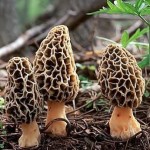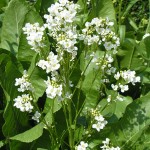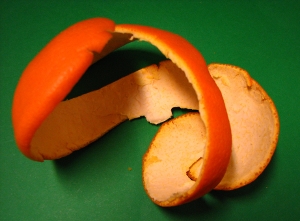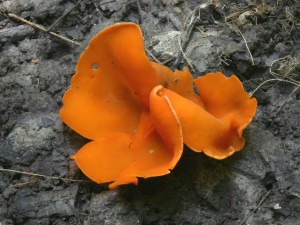Types of foraging
There are two types of foraging. The dictionary definition infers some manner of searching for, or vegetarian stalking of, foodstuffs. The epitomy of this is mushroom picking, which normally requires a silent hunt for an enigmatic quarry. That’s the most exciting and frustrating type.
The other kind of foraging is really more like harvesting, whereby the forager is returning to a known resource at regular intervals. The ‘thrill of the chase’ is over, superseded by warm, satisfying familiarity – and a full belly!
As the wild food hunter gains knowledge and experience of their locality, they will inevitably start to do more type 2 harvesting than type 1 foraging. Though i love returning to my favourite locations each year as they give up their bounty, i still get most pleasure from visiting new areas to see what goodies they are hiding. The odd fruitless foray only adds to the pleasure of discovering a rich new seam of ceps, or a previously unfound delicacy.
I always have a ‘most wanted’ list in my head of all the wild foods I am still to track down. Truffles, morels and horseradish are currently top of my hit-list, and though there is a high probability that i will never find them in Galloway, I will never stop searching!
The biggest thrill with any wildfood is normally the first time you find, identify and scoff it. I still vividly remember my first chanterelle patch. I had been hesitantly and naively wondering whether every vaguely orange fungi i came across was the legendary girolle, when i rounded a small beech tree near Whiting Bay on Arran and was dazzled by a carpet of gold the size of a snooker table. I instantly new i had found my first chanterelles and have been a class A foraging junky ever since.
I have tested the patience of many a companion by always wanting to wade through one more beech lined burn, hop just another fence, or check out ‘that last wee bit of wood’ (its normally the one waist-deep in brambles). Any drive through a new area is normally a fairly dangerous affair too, as I ogle the hedgerows, drool over likely looking wood edges and perform emergency stops for any puffball sized pale, round object I catch a glimpse of in a field. You will be amazed by how many bouys and footballs are abandoned in fields! My other common blunder is, unsurprisingly I suppose, mistaking orange peel for orange peel fungus!
SPOT THE DIFFERENCE







2 Comments
Great site Mark
Mind its a lot easier foraging for Cornish Pastys in Dalbeattie !!!
Need to get some lessons on a pie per veiw basis !!
Its true…I find myself foraging all sorts of things as part of my day job. Mostly scones, coffees, pies and bad jokes from butchers. Dalbeattie is definitely one of my best pasty foraging areas. How about you take me out on one of you “fishing” evenings and i’ll show you what else is good to eat? Thats if your boat is big enough for both of us and all your “equipment” (Deuchars, John Smiths, Export etc)?